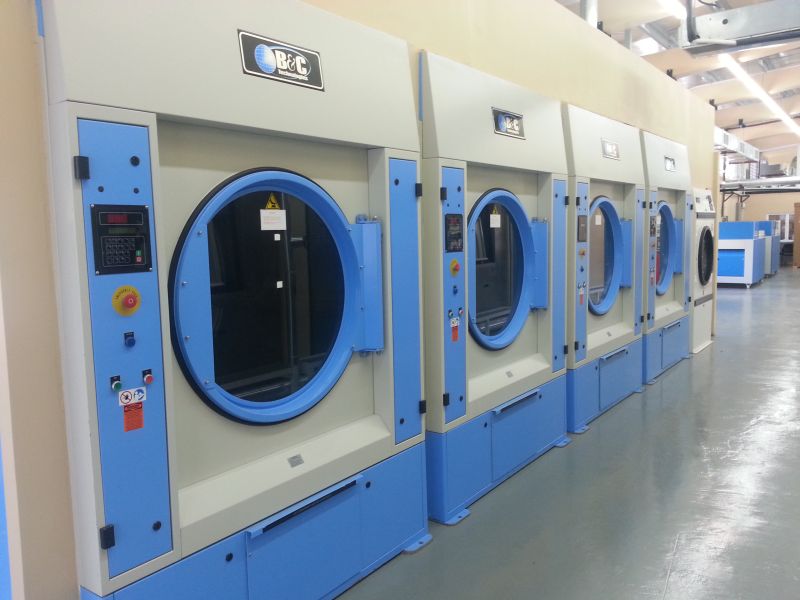Choosing a Dryer for your Commercial Laundry

Choosing a Dryer for your Commercial Laundry
Picking the right dryer for your commercial laundry is important to productivity and efficiency and contributes to the overall throughput of your laundry. Whether you’re replacing an aging dryer or building new, today we’ll take a look at some common options as well as some other basic information needed to make the right decision.
Heating Type
Generally, there are 3 common types of heating for a dryer:
- Gas Heating
- Steam Heating
- Electric Heating
Gas heating is the most common in the United States, mainly due to the availability of natural and propane fuels as well as the relatively low cost in most areas. Gas heated dryers are simple, common, and well understood by most service technicians. The main downside to gas heated dryers is the fact that we have a 4,000F flame and we’re trying to maintain a temperature lower than 200F. For delicate fabrics, these high temperatures that will be present can cause fabric damage.
Steam heating is likely the second most common heating type used in the United States and is much more popular in other parts of the world due to the overall availability via local municipalities. Steam heated dryers are also very simple to operate and service. Steam provides a consistent temperature just above where standard drying occurs (typically in the low 300F range for pressures around 100psi). This practically means that goods are less likely to be damaged due to the lower temperatures provided by the heat source. Drying performance is not impacted and will have similar drying times compared to gas heated dryers. Things to look for in a steam dryer include a damper system instead of an electromechanical steam valve, as a valve turning the steam on and off will eventually cause damage to the steam coil due to the constant thermal expansion and contraction. A damper system allows the steam coil to remain charged during operation, greatly reducing the amount of thermal shock the steam coil will experience in a given day. Many smaller dryers use steam valves, while larger machines will use a damper system. Note that the damper system will likely require compressed air to operate.
Electric heating is typically in use where neither gas nor steam is available. Like steam heated dryers, electrically heated dryers provide a more “gentle” heat when compared to gas heated units. The main drawback for a commercial dryer which heats with electricity is the need for a large 3 phase electrical system, as the current draw needed to provide the heat for a large dryer is significant, which can lead to a higher installation cost and possibly higher costs of operation depending on what electricity rates are in your area.
Sizing the Dryer
If you are replacing your existing dryers, it’s important to choose a size which will work with the existing washer-extractor. The rule of thumb here is that the drying cylinder volume should be at least twice the size of the washer-extractor cylinder. The extract force of the washer-extractor also comes into play here. If you have older, lower extract force machines (100G or less), then you may wish to upsize the dryer size a bit so that the goods spend more time falling, as this is the only time that the goods will be actively drying. For example, if you have 80G extract 50 pound washer-extractors, you would choose 75 pound dryers. Luckily, most washer-extractors in modern laundries are at least 200G extract force, which will allow you to use a similarly sized dryer, saving money. If you are still using older, lower speed machines, an upgrade is needed, as you’ll save about 40% in fuel costs and drying time by using modern, high speed 350G extract softmount washer-extractors. If you’d like to learn more about how high speed extracts save you time and money, check out this blog post!
In conclusion, choosing a dryer comes down to sizing the machine and the heating type. Of course, the machine must be able to fit in the space designated for it and it must fit through any doorways or hallways between the outside and the laundry room. Remember that the washer-extractor and dryer work together as a system and if one piece of the team isn’t working well, the results will be poor.